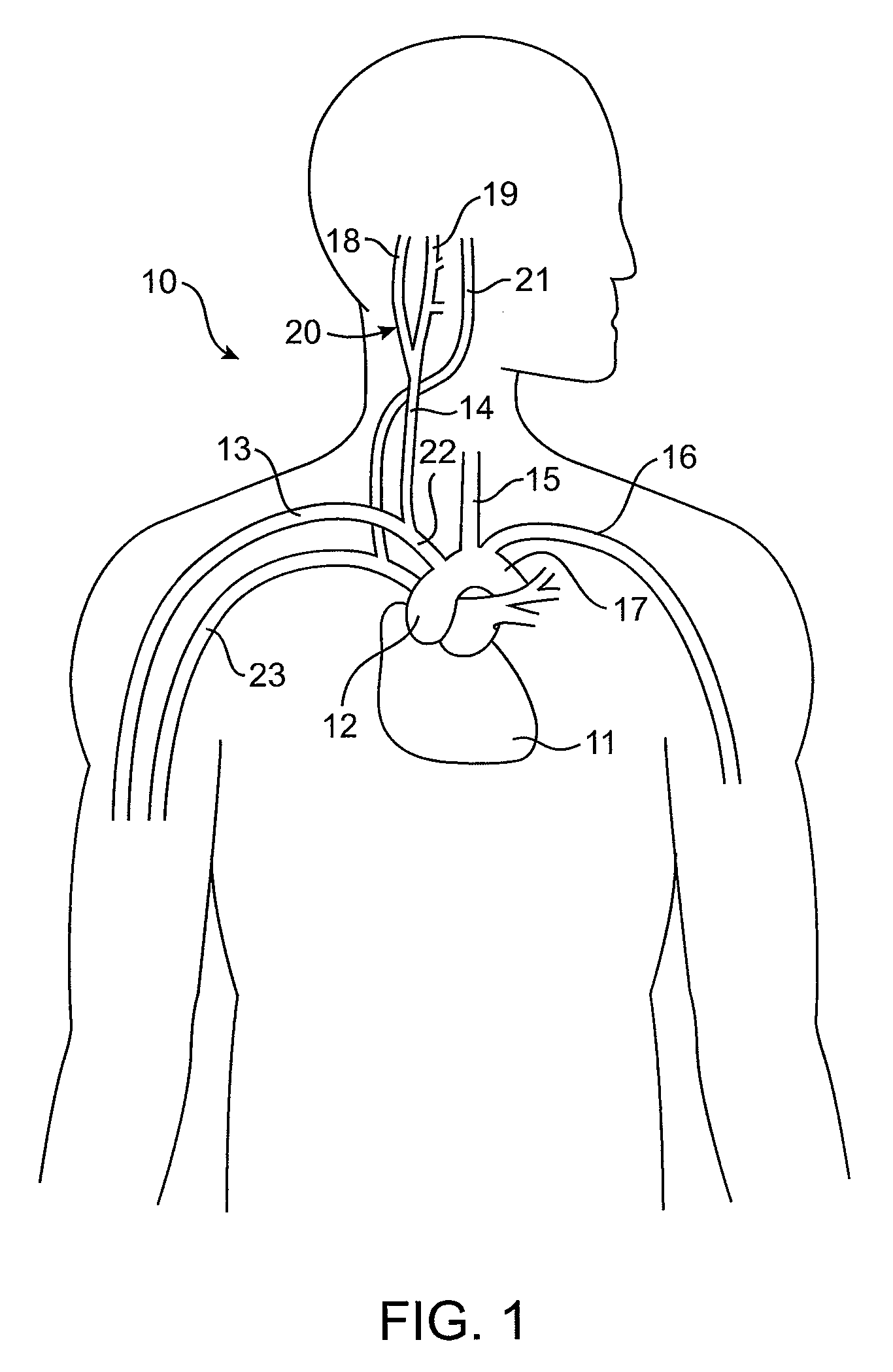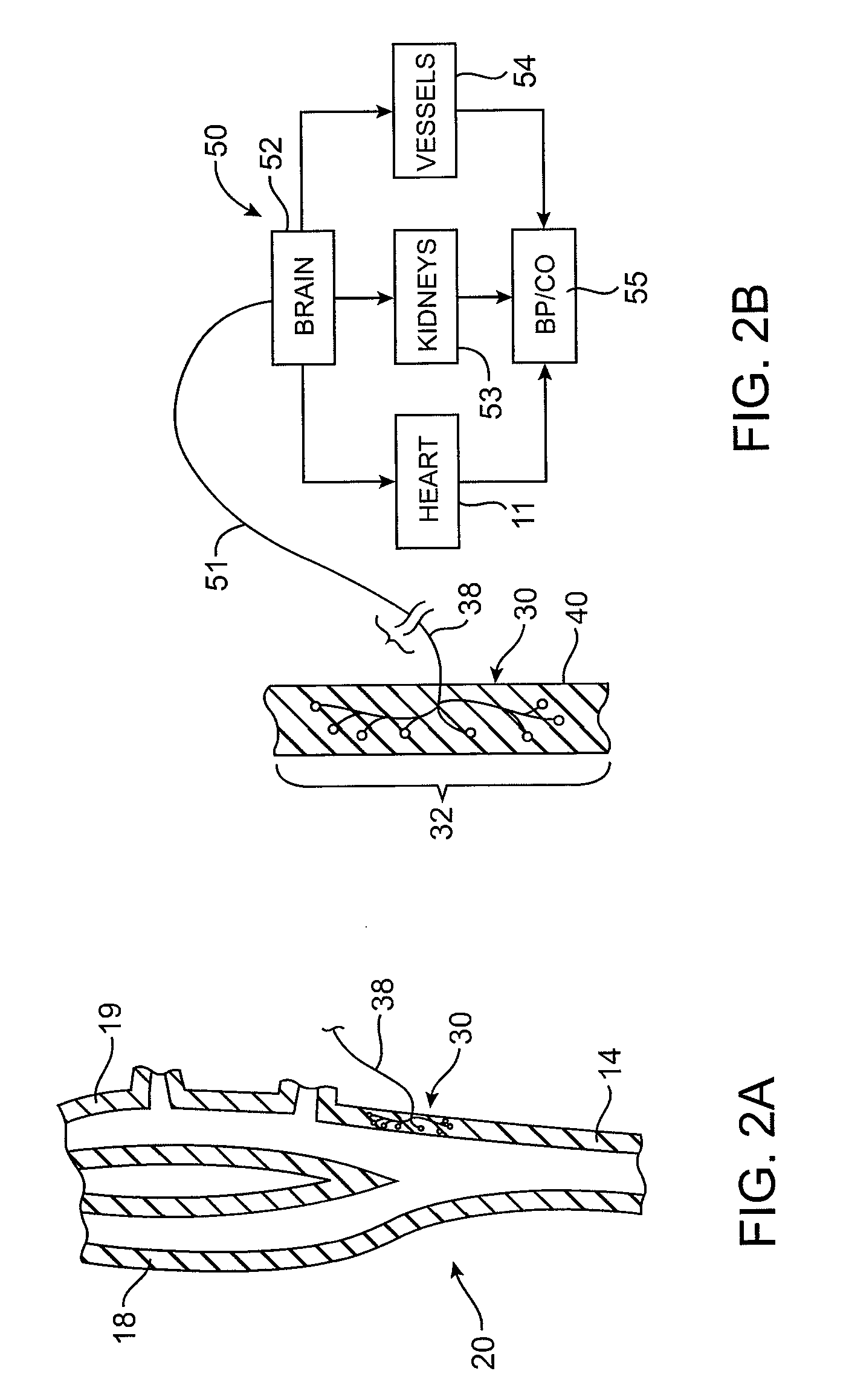Baroreflex Activation Therapy With Incrementally Changing Intensity
a baroreflex activation and intensity technology, applied in the field of medical devices, can solve the problems of increased blood pressure, increased blood pressure, increased etc., to reduce excessive blood pressure, increase parasympathetic nervous system activation, and reduce excessive blood pressure
- Summary
- Abstract
- Description
- Claims
- Application Information
AI Technical Summary
Benefits of technology
Problems solved by technology
Method used
Image
Examples
Embodiment Construction
[0045]Referring now to FIGS. 1, 2A and 2B, within the arterial walls of the aortic arch 12, common carotid arteries 14 / 15 (near the right carotid sinus 20 and left carotid sinus), subclavian arteries 13 / 16 and brachiocephalic artery 22 there are baroreceptors 30. For example, as best seen in FIG. 2A, baroreceptors 30 reside within the vascular walls of the carotid sinus 20. Baroreceptors 30 are a type of stretch receptor used by the body to sense blood pressure. An increase in blood pressure causes the arterial wall to stretch, and a decrease in blood pressure causes the arterial wall to return to its original size. Such a cycle is repeated with each beat of the heart. Baroreceptors 30 located in the right carotid sinus 20, the left carotid sinus and the aortic arch 12 play the most significant role in sensing blood pressure that affects baroreflex system 50, which is described in more detail with reference to FIG. 2B.
[0046]With reference now to FIG. 2B, a schematic illustration sho...
PUM
 Login to View More
Login to View More Abstract
Description
Claims
Application Information
 Login to View More
Login to View More - R&D
- Intellectual Property
- Life Sciences
- Materials
- Tech Scout
- Unparalleled Data Quality
- Higher Quality Content
- 60% Fewer Hallucinations
Browse by: Latest US Patents, China's latest patents, Technical Efficacy Thesaurus, Application Domain, Technology Topic, Popular Technical Reports.
© 2025 PatSnap. All rights reserved.Legal|Privacy policy|Modern Slavery Act Transparency Statement|Sitemap|About US| Contact US: help@patsnap.com



